We sinned incautiously when we took Tarragona as a simple recreational weekend walk, and the importance of a splendid Roman print, one of the best preserved in Europe, overflows from our hands. It is even silly to think that some people only talk about their neighbouring cities like Barcelona when it comes to Catalan tourism. This tourist map of Tarragona invites you in an unparalleled way to travel through the ancient city of Tarraco, a prosperous Roman province that had a political-administrative seat in it and whose subsequent cultures did not manage to overshadow this grandiose imperial stamp. Like other Tarragona cities, it is an open-air museum, but on top of that you will not have the inconvenience of finding an active and lively city that invites you to drink a good vermouth, walk, learn, enjoy good food and good seats to admire the Mediterranean.
Tourist Map of Tarragona
Contents
Tarragona is a beautiful place to take long evenings and go into the old capital of the province of Hispania Tarraconesis. As a city-municipality, it has stood out on an economic level for its important port activity. Since ancient times, its relationship with the Mediterranean has contributed to the progress of the province. Today it continues at such a pace that despite its small size it houses an important population of 130 thousand inhabitants; a bit crowded, but not quite. Tarragona always shows a quiet face of warm Mediterranean climate, very attractive and famous for its beaches and attractive bars and restaurants that are mixed in historical facades, immersing the visitor in an ancient atmosphere, where different times converge. A city that has much to tell for its varied and consequent history all perfectly told by the National Archaeological Museum of Tarragona.
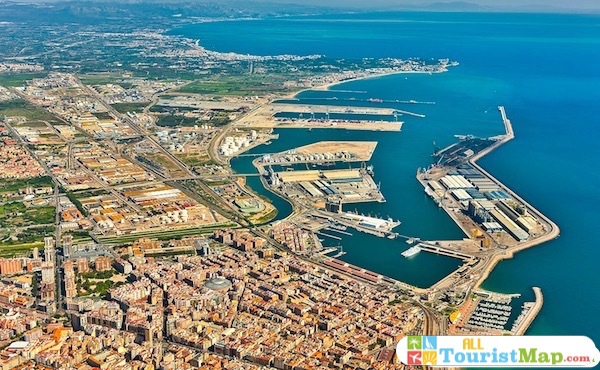
As a main course we have a collection of historical places of the imperial Rome, whose remains remain destined to tell for many generations onwards the greatness of this period of the province. All this is covered in a monumental route where you can see the Aqueduct of the Ferres, easily since we entered the city by road, the Circus, Amphitheater and the Forum of the Colony of Tarragona. The paleochristian necropolis of Tarragona is working hard to soon offer a complete view of its sarcophagi which are counted by thousands, Visigothic and medieval remains are documented in the memory that rest here as in the Cathedral of Santa Tecla. If your thing is to walk and get into the life of Tarragona we have the Rambla Nova which ends with a beautiful view of the sea thanks to its Mediterranean Balcony.
Tourist guide in Tarragona
There is no doubt that Tarragona has an architectural heritage; a lot of history, from Rome, the Middle Ages and the modern age. It is also true that in the face of so much stone you will want to have a complete vision of the city. Its surroundings and sites give rise to an interesting mixture of the modern with the old European style; elements that in fact are very much in keeping with it. For this reason and more we are ready to show you the best of the best in this tourist guide of Tarragona, in which you will have a route that lends itself to a tour of hours, and even pause it to complete it the next day. As we want you to know everything, we reveal what is behind every tourist place. It is well worth a pass or have a reference for any enthusiast for the Hispania.
What to see in Tarragona
Upper Part

Inside her, everything. It simply represents the historical centre of the city and from which we can tour, almost chronologically, the Roman part of the medieval one. It is said to be the upper part simply because it is located at the highest point of the Tarragona. If you visit the tourist office of Tarragona you can get with your guides and street maps entrance tickets to stately homes such as Casa Canals from which you can see the Mediterranean from its terrace. The city’s cathedral can be seen when you walk through Plaça de la Seu, which is crowded with people during the holidays. The Casa de Castellarnau, former residence of King Charles I can also be visited. Don’t forget to take a tour of the city walls, where you can see some Roman sculptures, cannons and towers full of history.
Les Ferres Aqueduct
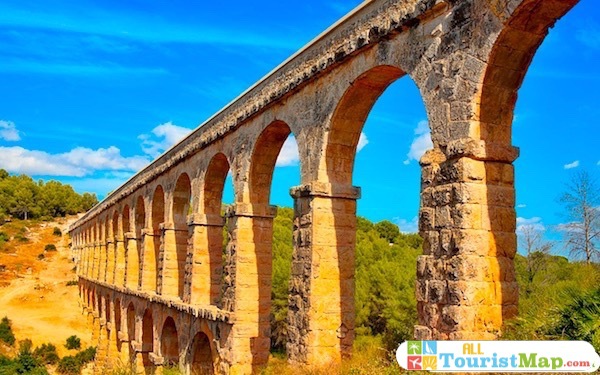
What is impressive about this civil engineering marvel is to contemplate today the nostalgia of a prosperous Roman city. Its perfectly carved dry stone arches have allowed it to carry the material load for almost 18 centuries! In good shape and with the original covering, a considerable section of this marvel remains regal, giving Tarragona its charm. Collecting water from the Francolí River meant the survival of the Tarraco Valley; it seems that this monument did very well in transporting water at a considerable height that defied the relief of a path that 217 meters. The figure of its superimposed arches and the geometric mixture can be seen from the road to Barcelona. It is inevitable to let oneself be attracted by this jewel in order to go through its internal channel and capture a good photograph in it.
Amphitheatre of Tarragona

Any archaeological route made in Tarragona must not be orphaned by this site. As an element that defined a Roman city you will have this amphitheatre from the 2nd century BC. It also has artistic elements dedicated to deities that can be seen thanks to recent excavations. The oval outline and the capacity of 15.000 souls are located at the shore of the city. It is precisely located in the lowest area to facilitate access to the materials and protagonists who often entered the city through the waters of the Mediterranean. All paying attention to the bloody combats of gladiators and other types of shows, contributed to the promotion of the Augustan culture. To travel through its interior consists of a journey in time that includes later periods. There are remains of a Visigothic basilica that was built in its arena where St. Fructuosus was martyred.
Nova Boulevard
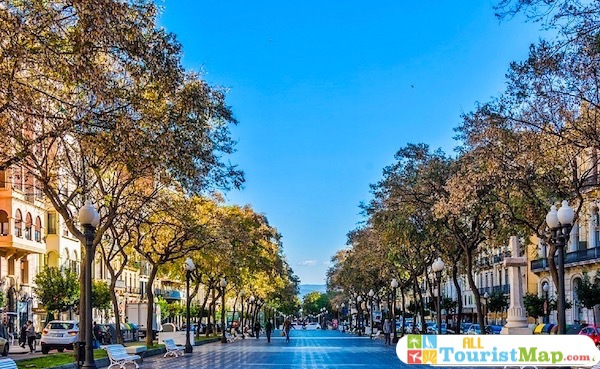
For lovers of strolling, the Rambla Nova is a feast of views through its modernist and neoclassical facades; all the beauty it offers is topped by a series of monumental works that adorn the route where you can see the artistic work of the Centennial Fountain and a Roger de Llúria, sitting on a bench that you can keep him company and read the newspaper or take a selfie. In any case, the walk is full of culinary surprises along with bars and kiosks where you can buy souvenirs. There is nothing better than this route as a link between the Francolí River and the coast. Its famous balcony of the Mediterranean and touching iron, frank expression of the place, where leaning out of its railing of forge offers you the most beautiful view towards the sea and the whole coast.
Cathedral of Santa Tecla
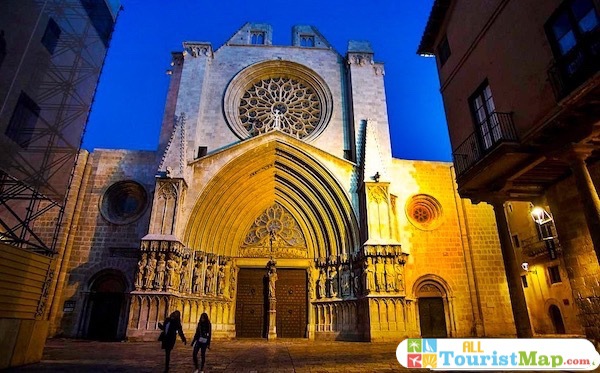
This important centre of religious worship deserves a special mention as it was a place of ancient temples throughout the occupations of other civilizations. This cathedral is a mere expression of 12th century Romanesque Gothic, a style that you will see expressed in many places in Catalonia. It is composed of three main naves, each with independent entrances that denote unfinished facades of remarkable beauty. Each space in this work includes several pieces of history. Its main chapels are dedicated to Saint Michael, Saint Francis, Saint Helen, Saint Lucia and Saint Tecla, among others. Tours are made to the bell tower, the Prebisterium, and the Sepulchre of John of Aragon. The Diocesan Museum, which can be accessed through the cloister, houses a fine collection of religious art from different periods of different elements, mainly from the medieval era.
Roman Circus

Every tourist route in Tarragona carries this Roman circus with it; a good piece of provincial history is extracted from it. The scene of legendary chariot races is remarkable for its magnitude; curiously built within the city walls, it is unusual for such a flavian work. It sustained intense activity for the crowds for more than three centuries. The main access is through the Pretori Tower, the Praetorium and the Circus being the most emblematic constructions of the complex. Perhaps because it is located within the walls, it was not built to a great size, but its 325 meters long capacity for 30 thousand people should not be underestimated. Together with this work it is possible to make a tour to Augustus’ palace. There are undoubtedly structural reforms that add cultural interest to this group of works that cannot go unnoticed on a trip to ancient Tarraco.
National Archaeological Museum of Tarragona
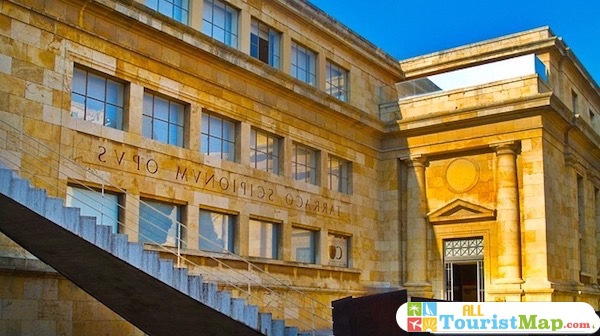
The museum compiles a vast collection of objects from the Romanesque period in Tarragona and its surroundings. It is considered to be the oldest collection in all of Calatuña. Its heritage is generally made up of finds found during the construction of the city and contributions from private individuals. Amongst these are pieces of pottery, coins, tombstones and funerary objects. Sculptural art is highlighted by the bust of Pomeone and mosaics, typical of Romanesque art; mere visual displays. The city represents an open-air monument, therefore the museum has been primarily responsible for the excavations. Its work has left important findings and protection of various points inside and outside the city.
Platja de l’arrabassada
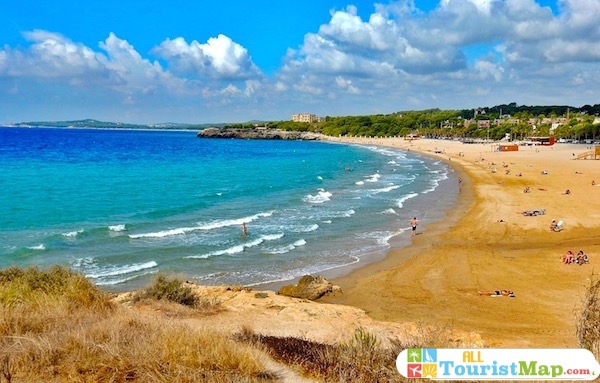
The Arrabassada is one of the beaches preferred by the Tarragonese and of course the one they most recommend to tourists. Its calm waters make it appealing to children and the elderly. Contact with its fine sand is a clean and risk-free beach option. It is one of the most important services and its long extension makes it a very good mattress for its high influx. There are a number of excursions that connect this beach with Savinosa, El milagro and Playa de los Curas. It is a tempting offer for hiking lovers to include a complete route with these beaches. There are several water and sport activities that are practiced in this place. It is a beach of easy access that although it is not the biggest, it is the cleanest.
Paleochristian Cemetery of Tarragona
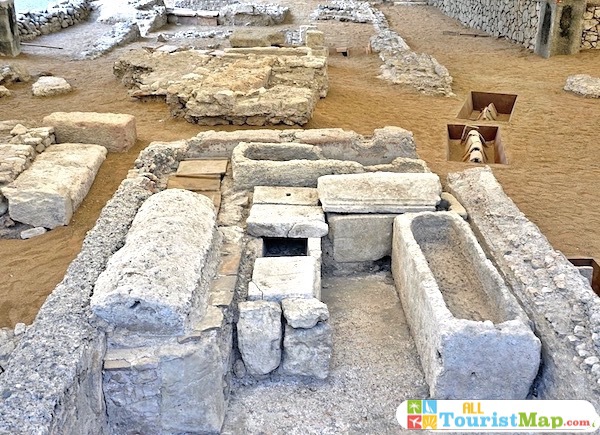
Tarragona preserves as part of its heritage a Roman and Christian necropolis. It is part of the Archaeological Museum of Tarragona and is a special site since as a holy field it is an important site. The details that adorn the tombs are authentic examples of art from Tarraco until the seventh century. You can also see pagan burials, which along with the rest have been discovered after excavations in the early twentieth century. Apparently the era of Visigothic rule marked the end of this important necropolis now famous throughout Europe with its more than 2,000 tombs. With an endless number of mosaic finishes and inscriptions of which we can highlight the nobility in many of these sarcophagi, although only one part is suitable for the general public. Currently a large part of the holy field is undergoing restoration work.
Forum of the Colony of Tarragona

It is important to recognize that the administrative and political life of this important Roman province was carried out in almost 300 by 150 meters of Roman scent. The buildings surrounding it housed the institutions that carried out all the administrative activity of the city. Having a wide central patio it was surely adorned by beautiful gardens. Archives and classrooms were located in this place and today it is living history that can be known through a guide belonging to the programs of Roman tours inside the city. They are usually included in the guided tours to the Roman circus. The decoration with pilasters, the levels of uncovered foundations and other debris give an idea of how big and important this administrative complex was for the province; perhaps one of the most notable in the whole Roman Empire.
Map of hotels in Tarragona
The beauty, and therefore, the experience in Tarragona is overwhelming. The fact of having a city rich in historical heritage of Roman city next to the beach, gives added value to the province next to its natural paradises. Generally, travellers tend to have a profile of high taste. When choosing where to stay in the city, look for that beach connection and the monumental route. One of the best destinations in Roman Catalonia, as the Roman city of Tarraco is, should not be lacking in hotel information. Therefore we recommend in this map of hotels of Tarragona the best accommodations like the hotel Lauria. A modest accommodation with a beautiful facade design made of stones just a few minutes away from your monumental route. Centrally located and with the sea as a window.
